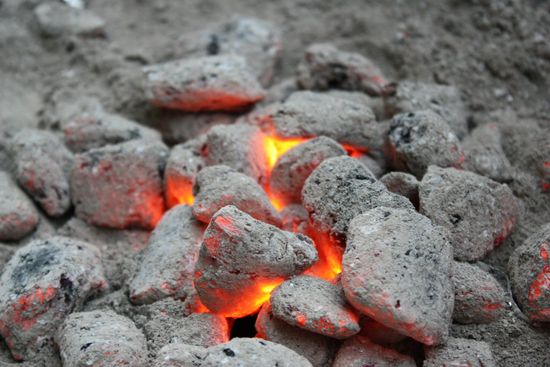Charcoal (fuel): Difference between revisions
imported>Pat Palmer mNo edit summary |
mNo edit summary |
||
| Line 23: | Line 23: | ||
| quote = The fact that charcoal burns better than wood was probably noted soon after man learned to control fire over a million years ago. The first use of charcoal for purposes other than providing heat was around 30,000 BC when cavemen used it as a pigment for drawing on the walls of caves. | | quote = The fact that charcoal burns better than wood was probably noted soon after man learned to control fire over a million years ago. The first use of charcoal for purposes other than providing heat was around 30,000 BC when cavemen used it as a pigment for drawing on the walls of caves. | ||
}}</ref> | }}</ref> | ||
}} | }}[[Category:Suggestion Bot Tag]] | ||
Latest revision as of 16:01, 26 July 2024
Charcoal is a fuel manufactured through the partial combustion of wood.[1] Prehumans discovered how to use fire early in prehistory - possibily as long ago as one million years.
Fragments of charcoal can be found in extinguished campfires.[1] Charcoal is black, and shows its wood origins, when heating, from partial combustion, drives out all remaining water in the wood, and drives out the wood's volatile elements. The charcoal that remains is almost pure carbon.
It has advantages over raw wood, as a fuel, because it is lighter, thus a more portable fuel than raw wood, and, when it burns, it can produce a hotter flame.[1]
Original charcoal burners would build a densely packed pile of wood, which would then be buried with a covering of soil, or clay.[1] The pile of wood would be ignited, and slowly allowed to smoulder. By the strategic poking of holes in the covering of soil or clay, and the strategic covering of those holes, the charcoal burner would allow in enough air for the fire to smoulder, without introducing enough air to completely consume all the wood. Ideally, combustion within the covered pile would be fueled mainly from flammable volatile elements of the wood driven off by the heat of earlier combustion.
An important early use of charcoal was the forges of iron-age blacksmiths.[1]
References
- ↑ 1.0 1.1 1.2 1.3 1.4 Joe Schwarcz (2017-03-20). Charcoal is one of the most important substances ever discovered. McGill Office for Science and Society. “The fact that charcoal burns better than wood was probably noted soon after man learned to control fire over a million years ago. The first use of charcoal for purposes other than providing heat was around 30,000 BC when cavemen used it as a pigment for drawing on the walls of caves.”
